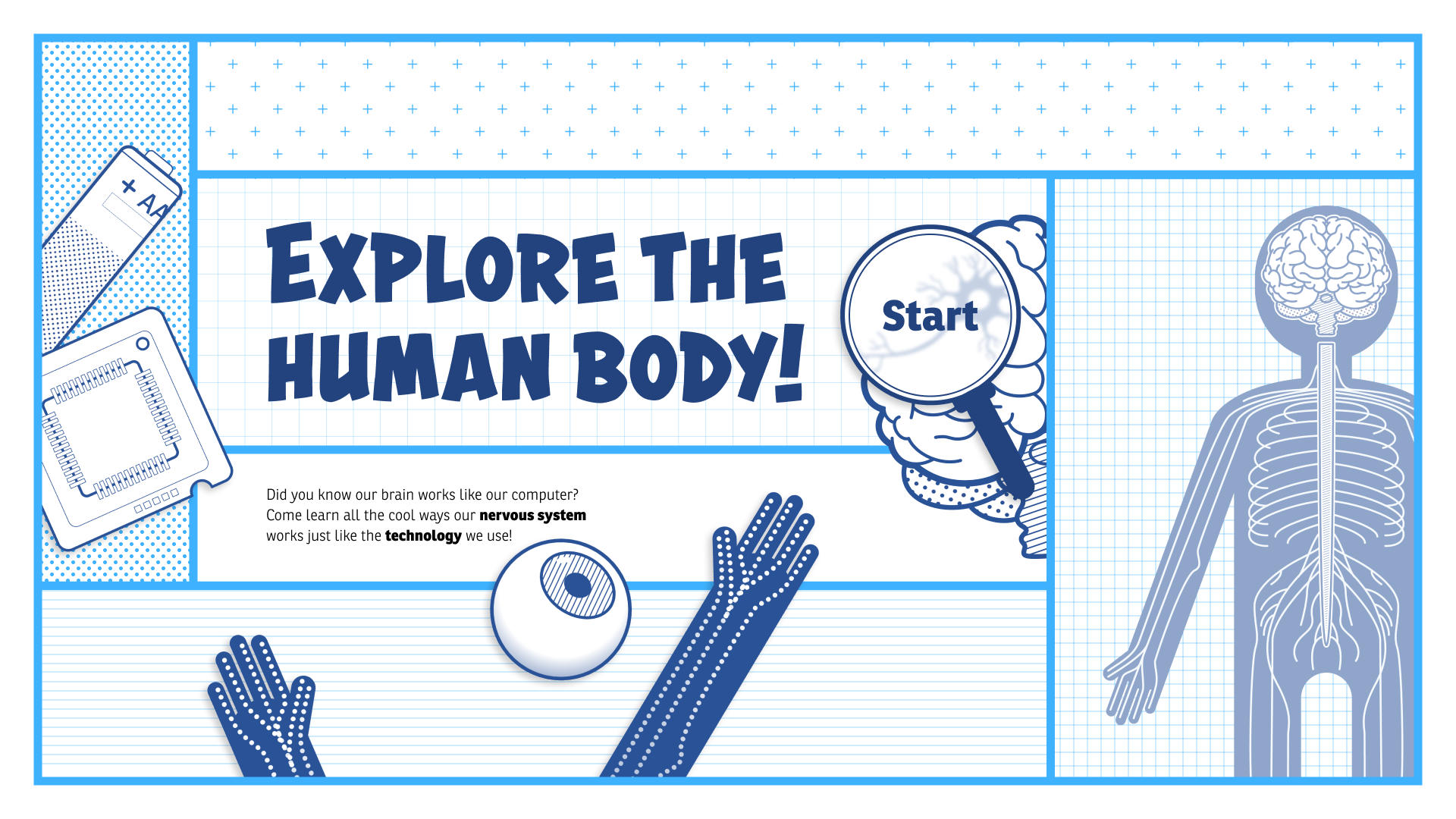A fun engaging website with illustrations that visually links the functions of our nervous system to the common technology we use today.

Although there are numerous available resources explaining the human nervous system for a general audience, these resources can be difficult to understand for those with limited scientific knowledge.
Our bodies hold the answers to many questions we may have. Have you ever wondered how we see the way we do? Nearly three in four Americans (73%) are uninformed about what many of their organs do and how they work. Since the onset of the pandemic, 81% of Americans are more concerned about their health than ever before. This led me to explore the available resources for educating the public about human anatomy and physiology. I discovered that there were many research articles and books on the subject matter, but they were written in highly academic language for college-level study and research.
Through this project, I intend to provide a credible and educational resource for middle school students (grades 6-8) to learn about our nervous system. I believe the best method to introduce these complex concepts is through visual analogies. Visual analogies are a valuable way learn to a new material based on what we are familiar with in our everyday life. This approach is different from available sources because it will not present massive amounts of text and intimidating medical terminology. Instead, the use of visual analogies will enable viewers to understand a complex physiological system in a meaningful way, without being overwhelmed by the information. This methodology can make the learning process more engaging, enjoyable, and memorable.
In conclusion, after analyzing the public educational sources about our bodies, it can be advantageous to inform and educate using visual analogies to highlight the many similarities between our organs and commonplace technology in our everyday lives. In order for this material to be accessible for everyone, the project will be presented as a website. To inspire engagement and a sense of welcoming, the website design will feature opportunities for interaction and use color in a conceptual manner.



A website filled with illustrations of analogies to help convey the working of the human nervous system. Explaining the system in an accessible and engaging manner to middle school students with comic-styled visuals. Inspiring engagement and a sense of welcoming, the website design features opportunities for interaction and fun animations for students to learn.
Designer
Sylvia Ow-Yang

Chang Kim—Primary Advisor
Graphic Design Professor, SJSU
Earl Gee—Secondary Advisor
Design Lecturer, SJSU
Sulekha Anand—Tertiary Advisor
Human anatomy and physiology professor